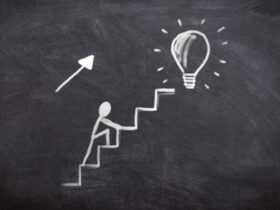What is Stoicism?
Stoicism philosophy dates back to the 3rd century BC when Zeno of Citium founded it in Athens. Stoicism is the art of not being phased by situations that are not under our control. It is a basic human tendency to try and control our surroundings. When this control is lost, emotional turmoil and depression grip our minds. Stoicism enables us to let go.
Example of Stoicism-
Joe– Someone stole my shoes. I feel terrible. I curse that the thief will get a sore foot. I miss my shoes.
Stoic– Ok. I lost my shoes. I will get new shoes.
Joe– I lost my job. I am a stupid jobless person now. I will never find another job. I want to get drunk and cry like a baby.
Stoic– Ok. I need a new job, let’s prepare a CV and look for new career opportunities.
Stoicism is all about looking forward in life and controlling what you can. It prevents your brain from overthinking. Stoicism is closely related to Lord Buddha’s teachings and forms the building blocks of cognitive-behavioral therapy (CBT). Nothing can help fight stress, depression, and anxiety better than stoicism.
Stoicism is especially relevant in modern times. We constantly get bombarded with a lot of information through news channels, Facebook, Twitter, Snapchat, and online forums. A selfie of your ex standing with her husband in Hawaii or a pic of your colleague next to his new SUV on Facebook can spin your emotions faster than a fidget spinner. Free yourself from the unnecessary pain and anxiety by practicing simple stoicism techniques
The three of the most effective and practical stoicism methods are listed below-
Method One: A view from above
A view from above is the method advised by Marcus Aurelius. It is the most effective way to put our problems into perspective. Envision yourself from the third-person view. Keep yourself in the center and slowly start to zoom out. Your first view can be of you sitting in your room. Then, zoom out to your house. Increase the magnitude to see your street, state, country, and continent. In the end, you can picture a view of the earth from the stars. Now contemplate the hurdles you are facing in your life.
Is your problem the biggest crisis on earth? Earth has faced five mass extinctions. The truck-size dinosaurs went into the dust, the pharaohs of Egypt are lying mummified in the museums, and British Empire has collapsed. A woman ghosting you after your first date is not the end of the Universe.
Is your problem real or imaginary? Living in the present is not easy. Sometimes we create Babadook from our own imagination. Haven’t heard from your friend in a while? Is she not picking up the phone? She might be busy, or her phone might have malfunctioned. Don’t stress over imagining the worst possible scenarios in your head. Give it some time and relax.
Is your current situation permanent? Can your problem be solved with time? Getting stuck in a horrible job or, worse, being jobless can get anyone stressed out. Remember, nothing is permanent. Don’t procrastinate. Work hard for your goals, and the situation will change. Nothing is permanent except for change.
Visualizing from a third-person view and seeing things from a bigger scale can give you a better perspective on your problems’ insignificance and worth. When compared to the size and overall scheme of our universe, whatever problems you might be facing might appear incredibly trivial. When things are put into perspective, it becomes far easier to understand the actual issue at hand, which helps overcome the emotional stress we experience in our day-to-day life.
'You can rid yourself of many useless things among those that disturb you, for they lie entirely in your imagination; and you will then gain for yourself ample space by comprehending the whole universe in your mind, and by contemplating the eternity of time, and observing the rapid change of every part of everything, how short is the time from birth to dissolution, and the illimitable time before birth as well as the equally boundless time after dissolution' – Marcus Aurelius
Method Two: Negative visualization
Negative visualization might sound dark or morbid, but that’s not the case. Seneca’s exercise is meant to increase our default level of happiness and enable us to put things into perspective. It prepares us to face the worst-case scenarios. We don’t realize how lucky we are to be alive and what an incredible gift life is. The Negative Visualization exercise makes us realize the value of happiness and the importance of things we take for granted. Envision yourself losing some of the things from your life. For example-
- How would it feel if you suddenly got fired from your job?
- How would it feel if your spouse left you for someone else?
- How would it feel if you are discriminated against for your race?
- How would it feel if your friends abandoned you?
- How would it feel to lose your limb in a car accident?
- How would it feel if you lost a loved one?
Consider these questions without fixating or stressing over them. When you visualize these things removed from your life, you begin to feel a sense of gratitude. You realize how lucky you are to have your job, family, social status, and healthy body. The keyword here is Gratitude. Humans tend to revert to their default level of happiness after an initial rush of hormones like oxytocin and dopamine.
Imagine you got the promotion you were anticipating for a long time or your childhood friend came to visit you after 10 years. You will be happy but for some time. After a while, you will get accustomed to the lifestyle and revert to your happiness base level. Practicing negative visualization helps you maintain happiness by being grateful for your accomplishments without taking your efforts for granted.
'Remember that all we have is “on loan” from Fortune, which can reclaim it without our permission—indeed, without even advance notice. Thus, we should love all our dear ones, but always with the thought that we have no promise that we may keep them forever—nay, no promise even that we may keep them for long.' - Seneca
Method Three: Voluntary Discomfort
Voluntary discomfort advised by Epictetus is most relatable to the story of Lord Buddha. This exercise forces us to get out of our comfort zone and train ourselves to do things that put us in challenging and uncomfortable situations. This exercise is highly relevant in the 21st century. We hold onto comfort with such high regard that minor discomfort or inconvenience can trigger emotional stress. You can perform voluntary or deliberate discomfort in many ways:
- Walking or cycling instead of traveling by car
- Fasting or being on a liquid diet for a day
- Waking up at 5 a.m for exercise or yoga
- Sleeping on the floor
- Spending a day without mobile or internet
- Taking stairs instead of the elevator
- Cold Showers
Once you overcome the need to be in a comfortable life all the time, you will find yourself capable of setting up your goals and sticking to your plans much easier. When you hear someone complain about the discomfort of walking long distances, you won’t relate. If and when life gets hard, you will be well equipped to deal with the challenges. The hardened-up lifestyle will also enable you to cherish the comfort of living in the 21st century.
'But neither a bull nor a noble-spirited man comes to be what he is all at once; he must undertake hard winter training, and prepare himself, and not propel himself rashly into what is not appropriate to him' - Epictetus
So these are the three stoic exercises that you must note down and incorporate into your to-do list. The best part about the time-tested practical philosophy of Stoicism is its universal applications. Stoicism is relevant in all aspects of your life, be it physical, emotional, or financial. It will help you become a better version of yourself.

Hunaid Germanwala is a digital marketer and content creator at Health Products For You since 2014. He has an MS from Ulm University in Germany. His mind is always buzzing with creative ideas and is eager to explore new perspectives. His motto in life is “Better to Light the Candle than to Curse the Darkness.”











Leave a Reply